Bulletin – December 2022 Australian Economy HC Coombs: Governor of Australia's Central Bank 1949–1968
- Download 883KB
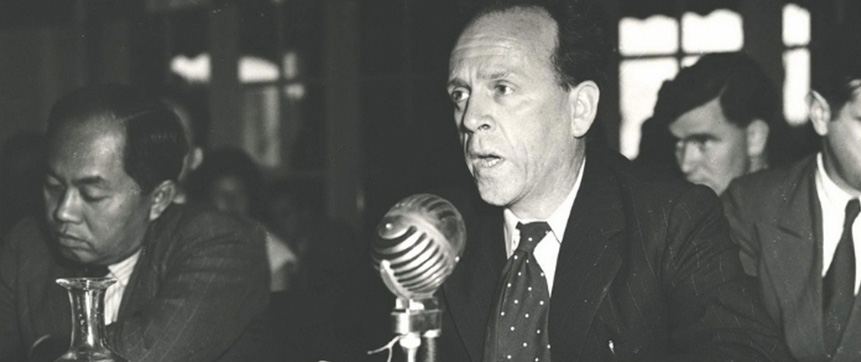
Abstract
Dr HC Coombs was Governor of Australia’s central bank for nearly 20 years. His appointment followed significant roles in Australia’s war-time administration and post-war reconstruction, where he was an architect of Australia’s international full employment policy, known as the ‘Positive Approach’. When appointed Governor of the central bank in 1949, Coombs remained committed to the pursuit of full employment. Influenced by Keynes, he sought to maintain aggregate demand and supply in ‘reasonable balance’, something the Reserve Bank continues to do today. After retiring from the Bank in 1968, Coombs continued to promote the arts in Australia and the rights and welfare of First Nations Australians. He became a senior adviser to the Whitlam Government and chaired the Royal Commission on Australian Government Administration – a fitting conclusion for someone often described as the nation’s greatest public servant. This article considers the life and career of HC Coombs, and complements the series of records that have been released on Unreserved.
Introduction
HC Coombs was the longest-serving head of Australia’s central bank. For 11 years (1949–1959) he was Governor of the original Commonwealth Bank of Australia, and for eight years (1960–1968) he was Governor of the Reserve Bank of Australia.
When Coombs was offered the position of Governor of the Commonwealth Bank in 1948, he was unsure whether to accept it, though he was well prepared for the responsibility. His postgraduate studies had focused on central banking and he had previously worked at the Commonwealth Bank as the Assistant Economist. After five years at the Bank, he was appointed Economist at the Treasury in Canberra. In 1941, he joined the Board of the Commonwealth Bank, and in the following year he was asked by the Prime Minister (John Curtin) to fill the newly created position of Director of Rationing. With the establishment of the Department of Post-war Reconstruction (PWR) in 1943, Coombs was appointed Director-General of PWR with responsibility for formulating and directing the nation’s reconstruction program after the war. He held the position until the beginning of 1949 when he moved back to the Commonwealth Bank as Governor.
During the 1950s and 1960s he was one of the distinguished group of senior public officials – the so-called ‘Seven Dwarfs’ – who were credited with the successful management of the Australian economy. In addition to his outstanding work as a central banker and government policy adviser, Coombs won public acclaim for: his work in promoting the arts, including theatre, opera, ballet, painting, sculpture and literature; his work to enhance the rights and welfare of First Nations Australians; and his support for the preservation of the natural environment.
The Bank’s archives contain a rich set of records spanning Coombs’ career, which are available on Unreserved and accompanied by the Research Guide: Dr Herbert Cole Coombs.
Early years
Herbert Cole Coombs was born on 24 February 1906 at Kalamunda, a village in the hills immediately east of Perth; he died in Sydney on 29 October 1997 at the age of 91. Throughout his life he was known as ‘Nugget’ Coombs because of his short, stocky build.
Coombs’ father had migrated to Western Australia from England and worked for the government railways, first as a cleaner and later as a stationmaster. Because of his father’s work, Coombs was raised in the country and attended rural primary schools. His mother encouraged the educational advancement of her children and Coombs won a scholarship to Perth Modern School after achieving success in a state-wide entrance examination. A keen sportsman, he represented the school at cricket and Australian football. On leaving school, he became a trainee teacher at the public primary school in Busselton and secured a bursary to Claremont Teacher’s College, graduating with qualifications to teach in government schools. At first, Coombs was assigned to schools in rural areas and so he enrolled for a Bachelor of Arts as an external student at the University of Western Australia (UWA). Later, he transferred to a school in metropolitan Perth and completed his degree as a part-time student. He majored in Economics and English; among his teachers were Edward Shann who was the Professor of History and Economics and Walter (later Sir Walter) Murdoch who was the Professor of English (Coombs 1981; Rowse 2002).
After graduating with first class honours in Economics, Coombs enrolled for a Master of Arts and chose as his thesis topic ‘The Development of the Commonwealth Bank as a Central Bank’ (Coombs 1931). He approved of cost cutting and devaluation to stimulate the economy, while opposing JT Lang’s plan to repudiate government debt and EG Theodore’s proposals for monetary expansion. Shann and LG Melville, Head of the Commonwealth Bank’s Economist’s Department and the first economist employed by the Bank, were the examiners of Coombs’ thesis.[1] Though they were critical of some aspects of the thesis, Coombs was awarded a Master’s degree and secured a Hackett Travelling Scholarship, which allowed him to undertake a doctorate at the London School of Economics (LSE). His preference was Cambridge, but he was now married and thought he had a better chance of finding work as a school teacher in London to supplement his scholarship.
His doctoral thesis at the LSE – entitled ‘Dominions Exchanges and Central Bank Problems’ – examined central bank policies during the Depression in Australia, New Zealand, Canada and South Africa (Coombs 1933). His supervisor was John Coatman, Professor of Imperial Economic Relations. Coombs argued that the central banks of the dominions should seek to preserve exchange rate stability in the short term while permitting flexibility in the longer term, with the aim of maintaining domestic price stability. Commercial banks, he contended, should have to lodge a proportion of their cash reserves with the central bank. However, Coombs also believed that open market operations should be used as a means of controlling the liquidity of banks and that central banks should actively use their discount rate for stabilisation purposes.
Assistant Economist at the Commonwealth Bank
When Coombs returned to Perth he found employment as a high school teacher and gave occasional lectures in economics at UWA. He was frequently invited to comment on economic issues for local radio stations and newspapers. In 1935, he moved to Sydney when he accepted the position of Assistant Economist at the Commonwealth Bank. Melville, who had the responsibility for appointing the Assistant Economist, was not altogether convinced that Coombs was the right person for the job. He wrote to Shann saying that he had ‘not made up [his] mind about Coombs’, and wanted ‘to explore the possibilities a good deal further’.[2] The position of Assistant Economist had become vacant when the former occupant, Mary Willmott Debenham, was compelled to resign from the Bank when she married JG Phillips, who later succeeded Coombs as Governor of the Reserve Bank. There can be little doubt that, had female staff been permitted to continue working at the Commonwealth Bank after they married, the history of central banking in Australia would have been rather different.
As Assistant Economist, Coombs occupied his time collecting and analysing economic data for Melville, and preparing policy papers for senior staff and the Bank’s Board of Directors. He was often invited to give lectures at the University of Sydney; in 1938, he taught the History of Economic Thought course when the lecturer went on leave. When Keynes’s General Theory was published in February 1936, Coombs at first had difficulty accepting some of the theoretical ideas advanced in the book.[3] However, in Coombs’ autobiography published in 1981, he acknowledged that Keynes’s book was ‘for me and for many of my generation the most seminal intellectual event of our time’ (Coombs 1981, p 3). Coombs is often regarded as Australia’s pre-eminent Keynesian.
Public servant
In 1939, Coombs left the Bank to take up the position of Economist at the Commonwealth Treasury in Canberra. He was soon invited to join the influential Financial and Economic (F&E) Committee, chaired by LF Giblin. As a member of the Committee, Coombs provided advice to the government on war finance and post-war economic policy (Figure 1). With the change of government in October 1941 and the switch from a market approach to war finance to a greater reliance on direct controls, Coombs was persuaded by Prime Minister Curtin to take up the new position of Director of Rationing. In early 1943, he moved again to become Director-General of the Department of Post-war Reconstruction.
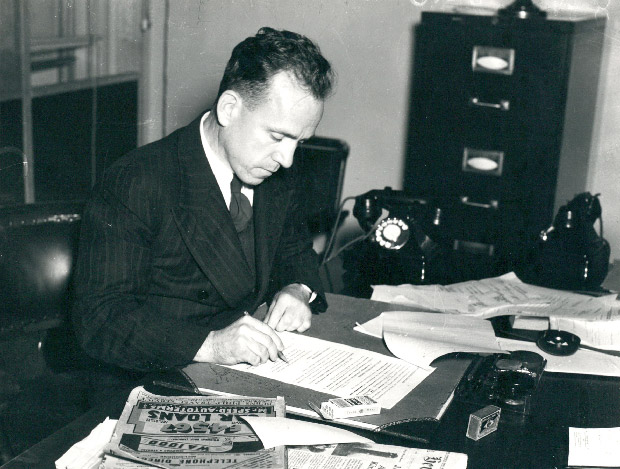
Among his new tasks as Director-General was the preparation of a paper for the government on employment policy after the war. This work led to the publication in 1945 of the white paper entitled ‘Full Employment in Australia’ (Cornish 1982). As well as responsibility for the preparation of the white paper, Coombs was an architect of the so-called ‘Full Employment Approach’ (or ‘Positive Approach’) – Australia’s response to Article VII of the Mutual Aid Agreement between the United States and Britain (and later between the United States and other countries, including Australia). Article VII contained the so-called ‘consideration’: in return for US financial assistance during the war, recipient countries agreed to dismantle impediments to international trade, such as the British imperial preferences. Given uncertainty about the restoration of international trade after the war and concern about the termination of existing preferential trade arrangements, the ‘Positive Approach’ declared that Australia would support Article VII provided the United States and other major economic powers agreed to pursue domestic policies aimed at maintaining full employment. That, it was argued, would provide a buoyant demand for Australian exports, offsetting the removal of preferential trade agreements and other obstacles to international trade. Australian delegations to all the important economic conferences during the 1940s sought the adoption of the ‘Positive Approach’ in the charters of the new international agencies that were being proposed. Coombs himself attended the first international economic conference on post-war policy convened in 1943 at Hot Springs, Virginia, to discuss food and agricultural policy. After the war, he attended important international trade conferences in London (1946), Geneva (1947) and Havana (1947–1948) (Cornish and Schuler 2019).
When Coombs was at the Department of Post-war Reconstruction he supported the establishment of a national research university in Canberra, so much so that he is regarded as the founder of the Australian National University (ANU). He was offered the foundation Vice-Chancellorship at ANU, which he declined on the grounds that he was committed to fulfilling his responsibilities relating to post-war planning. Even so, his close association with ANU continued over succeeding decades with his appointments as Deputy Chairman of the Council, Pro-Chancellor and Chancellor (Cornish 2007; Rowse 2002, pp 133–139).
Appointment as Governor
Coombs acceded to the Governorship of the Commonwealth Bank on 1 January 1949 following the retirement of HT Armitage (Figure 2). The appointment came as a surprise to some since there was an expectation that Melville would be offered the job. Giblin, in his letter of congratulations to Coombs, said he ‘thought Melville should have had it – or at least been offered it’; however, he added that ‘if it was not to be Melville, then most certainly you’. Replying to Giblin, Coombs admitted that he ‘always thought that Melville should have had this job and I have given that advice in the appropriate quarter’.[4] He also made it clear to Giblin that he was anxious ‘to have the benefit of Melville’s help’ in the future.
In his own congratulatory letter to Coombs, Melville wrote that while he ‘should have liked the job’, he was sure that Coombs would ‘do it as well as I should have done – others will think better’. He spoke warmly of his past association with Coombs, recalling that he had ‘always enjoyed working’ with him and was ‘confident that that happy relationship will continue’. He assured Coombs that he would give him ‘any help I can with your new tasks’.[5] As for Coombs, he went out of his way to look after Melville, supporting his selection as ANU’s Vice-Chancellor and his appointment as Australia’s Executive Director at the International Monetary Fund and World Bank. When Melville resigned from the Commonwealth Bank to take up the ANU position, Coombs wrote to him saying that ‘in the years you were with the Bank you made a contribution to the theory and practice of central banking which is without equal in the world’.[6]
When the commercial and central banking responsibilities of the Commonwealth Bank were separated in January 1960, Coombs was appointed Governor of the Reserve Bank of Australia. While he did not support the separation, he made it clear to the Prime Minister (RG Menzies) that he would do everything in his power to make the separation a success (Coombs 1981, pp 133–139).
There were several reasons why Coombs opposed separation. For a start, he was not convinced that monetary policy could be successfully conducted in Australia without the commercial functions of the Commonwealth Bank. The advantage of a composite commercial and central bank, he argued, was that the commercial operations could be used to supplement the limited central banking instruments that were available. For example, when monetary tightening was called for, the commercial arm of the Commonwealth Bank could restrict its lending, and when a loosening of policy was appropriate, it could expand its lending. Also of concern to Coombs was that a smaller central bank would provide fewer opportunities for staff promotion and consequently the Bank would run the risk of losing promising staff. The privately owned commercial banks, on the other hand, fought against the continuation of a composite commercial and central bank, asserting that it was inappropriate that their major competitor, the Commonwealth Bank, was also the nation’s central bank.
By the middle of the 1950s, it was clear that Coombs had lost the battle to preserve the combined functions of the Commonwealth Bank. Legislation was drafted in 1957 to separate the commercial and central banking responsibilities of the Bank; legislation to establish the separate Reserve Bank was eventually passed by the Parliament in 1959 after it had been rejected by the Senate in 1957 and again in 1958.
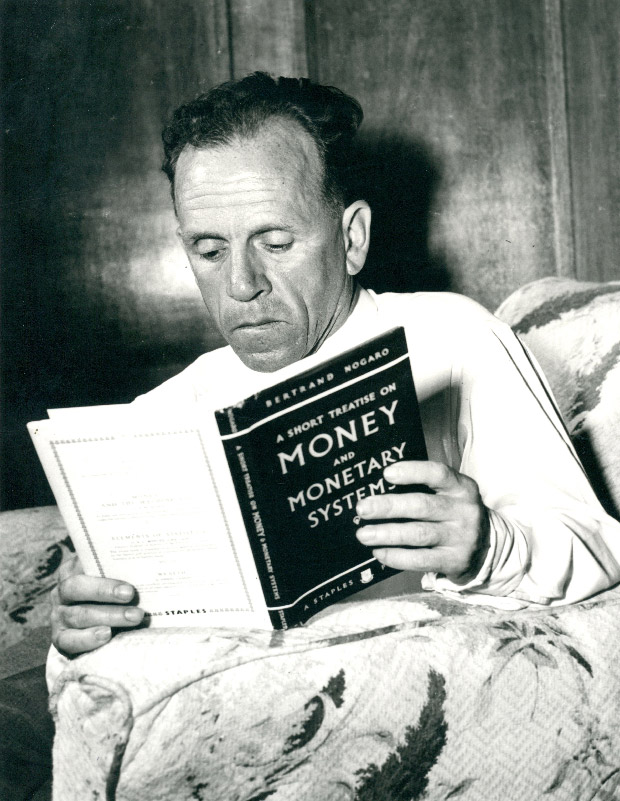
Central banker
Coombs’ advice to the government throughout the 1950s and 1960s continued to be based on the principles set out in the 1945 white paper – namely, to use monetary (and fiscal) instruments to fine-tune the economy so that aggregate demand and supply remained in balance. In 1949, he advised the government against devaluing fully with sterling against the US dollar, for to do so would accelerate inflationary forces that had already pushed the annual rate of inflation to nearly 10 per cent (Coombs 1981, pp 150–151).[7] In 1951, in the midst of the Korean War boom, when inflation exceeded 20 per cent, he advised the government to tighten monetary policy by raising interest rates and increasing the special deposits that banks were compelled to hold at the central bank. The government, on the advice of the Treasury, was reluctant at first to increase interest rates, but in the end it was forced to act when the balance of payments deteriorated. A ‘horror’ budget was introduced, and the economy was driven into recession. This was the first of the ‘stop-go’ cycles that were to be repeated in the mid-1950s and again at the end of the 1950s into the early 1960s. Coombs and his central bank colleagues were invariably ahead of the Treasury in wanting to nip nascent booms in the bud by gently altering the stance of monetary policy; however, delays meant that when policy settings were eventually altered the measures adopted were excessive and too late.
Coombs himself was especially sensitive to the problem of inflation, devoting a public address given in 1959 to what he called ‘A Matter of Prices’ (Coombs 1971, pp 118, 120). A central theme of the address was that inflation was becoming acceptable to many in the community. For Coombs, this attitude possessed ‘a specious charm’ and required ‘critical examination’. As he explained, a ‘persistent tendency for prices to rise may, like the housemaid’s baby, be very small at first – but once people have got used to it being around, they may well be astonished at how rapidly it will grow’. It was his view that the ‘tendency of prices to creep upwards … derives in part from the attitudes of people – those who make decisions in business and those whose passivity towards such decisions reduces the natural resistance to higher prices’. Inflation ‘does matter’, Coombs insisted, for if prices continued to rise it would pose ‘a serious and growing threat to the health of our economy; if it continued uninterrupted there would be a grave danger that it will gather momentum from the efforts of people to protect themselves from its effects and cease to be merely a “creeping inflation”’. He would no doubt have taken an interest in the work on ‘inflationary expectations’ that emerged not long after his speech in 1959.
A major problem faced by Coombs was that the monetary controls available to conduct monetary policy – including controls on interest rates, limits on bank lending and the special deposit system (from 1960, the Statutory Reserve Deposit ratio) – were thought to be confined by the Australian Constitution to banks. But to restrict the operations of banks in these ways encouraged the growth of non-banking financial intermediaries, including finance companies, building societies, credit unions and other financial institutions that were not subjected to the various direct controls. In the result, the area of the financial system over which the central bank had control diminished as time progressed. Coombs tried to overcome the problem by allowing banks to establish non-banking subsidiaries and partnerships. More particularly, though less successfully, he argued that monetary policy should be conducted by market mechanisms rather than through direct controls. Replacing direct controls with more flexible interest rates, meant greater central bank influence over the entire financial system instead of just the banking sector. He also saw merit in flexible exchange rates. On a visit to Canada in the early 1950s, he devoted some of his time to assessing the impact of the Canadian decision to float its currency, recommending on his return to Australia that the Commonwealth Bank should evaluate the benefits of floating currencies.[8]
A source of Coombs’ success as Governor was his ability to develop a close rapport with government ministers. About his relations with Curtin, Chifley, Fadden and Menzies, Coombs wrote in his autobiography that ‘there developed a personal affection which greatly enriched the relationship and I believe added to its effectiveness’. It should perhaps come as no surprise that he was close to Curtin and Chifley. But it may be surprising to learn of the close relationship that developed between Coombs and Menzies (Figure 3). When Coombs was unable to persuade Treasurers Fadden and Holt of the need to change the direction of monetary policy, he would take the matter to Menzies and generally receive a sympathetic hearing. And when Coombs retired from the Reserve Bank, Menzies, who had retired as Prime Minister two years before, wrote a warm letter to thank him for the support he had given to the governments that Menzies had led. Menzies wrote to Coombs:
You will remember when I came back into office you, as a man suspected of unorthodox ideas, were under a cloud of suspicion by some of my colleagues. The cloud soon disappeared as it became increasingly clear to the most prejudiced that we had as Governor a man of the most conspicuous ability and of the most shining integrity.
It remains a matter of great pride for me to have got to know you as well and to have benefited so much from your great services to our country.
But my happiest memory is that we have become close friends in a personal way.[9]
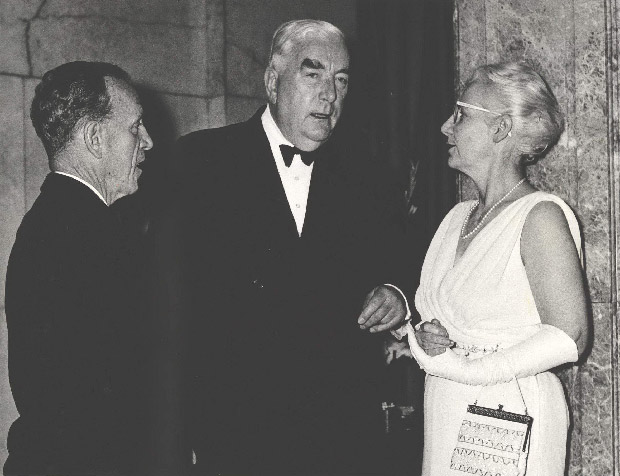
Retirement
During his tenure as Governor, Dr Coombs had been a committed patron of the arts, responsible for the prescient acquisition of works by emerging Australian artists that now form a small but culturally significant mid-century collection. His patronage extended to performing arts, including as Chairman of the Elizabethan Theatre Trust, a role he continued in his retirement (Figure 4).
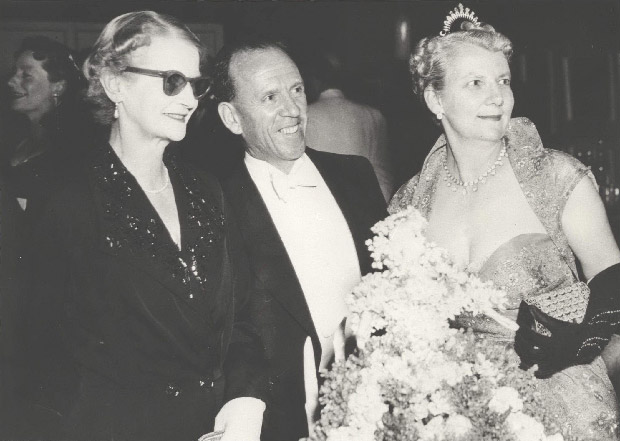
Coombs chose to retire as Governor of the Reserve Bank in 1968. Before leaving the Bank, he was appointed by Prime Minister Holt to two positions created especially for him – Chair of the Council for Aboriginal Affairs and Chair of the Australian Council for the Arts.
Shortly before the 1972 election, the Leader of the Opposition, EG Whitlam, invited Coombs to join him as an adviser in the event of the Australian Labor Party (ALP) winning the election. When the ALP did win, Coombs took on a number of special assignments for the new Prime Minister, including the chairmanship of a committee (the ‘Coombs Task Force’) to evaluate expenditure programs introduced by previous governments. As wage demands stimulated excessive price inflation, Coombs was asked to advise the government on how to limit wage increases. He proposed a strategy that would allow low wage incomes to be fully indexed to price increases, but higher wage incomes would be indexed at rates below full indexation. This proved to be unacceptable to the trade unions and some members of the government. The rejection of Coombs’ advice was something of a turning point in his role as economic adviser to Prime Minister Whitlam. His disillusionment with the government’s handling of economic matters plummeted further after Dr JE Cairns became Treasurer. Coombs was then appointed by the government to chair the Royal Commission on Australian Government Administration, which reported to the Fraser Government in 1976. The report called for a more ‘responsive’ public service and the selection of public servants from a wider and more diverse recruitment base.
With the completion of his work for the Royal Commission, Coombs was appointed to a Visiting Fellowship at the ANU’s Centre for Environmental Research, spending half the year in Canberra and half the year in the Northern Territory at the ANU’s Northern Australia Research Unit (Fenner and Harris undated). As a public intellectual, Coombs could be more outspoken than he had been as a public servant or central banker. Until now, he had been acutely aware of the problem of providing private advice to government on the one hand, while publicly criticising the government on the other. He supported autonomy for First Nations Australians, advocating their self-determination and proposing a Treaty of Reconciliation. He frequently visited Arnhem Land, the Western Desert and the Kimberley region. During this time, Coombs wrote his autobiography, A Trial Balance, together with a series of books covering Aboriginal and environmental issues.
While Coombs never sought public recognition, for his many contributions to public policy he received numerous awards. In 1972, he was The Australian newspaper’s inaugural Australian of the Year, and in 1975 he was made a Companion in the Order of Australia (AC), the nation’s highest honour, which he gave up the following year when he opposed the reintroduction of knighthoods. In 1969, he was appointed a Fellow of the Australian Academy of Science and was a foundation Fellow of both the Australian Academy of the Humanities and the Academy of the Social Sciences in Australia. He held honorary doctorates from ANU, UWA, the universities of Melbourne and Sydney and Macquarie University, and he was an Honorary Fellow of the LSE. In 1977, he was awarded the ANZAAS Medal at the 48th Congress of the Australian and New Zealand Association for the Advancement of Science. The HC Coombs Building at ANU is named after him (Figure 5).
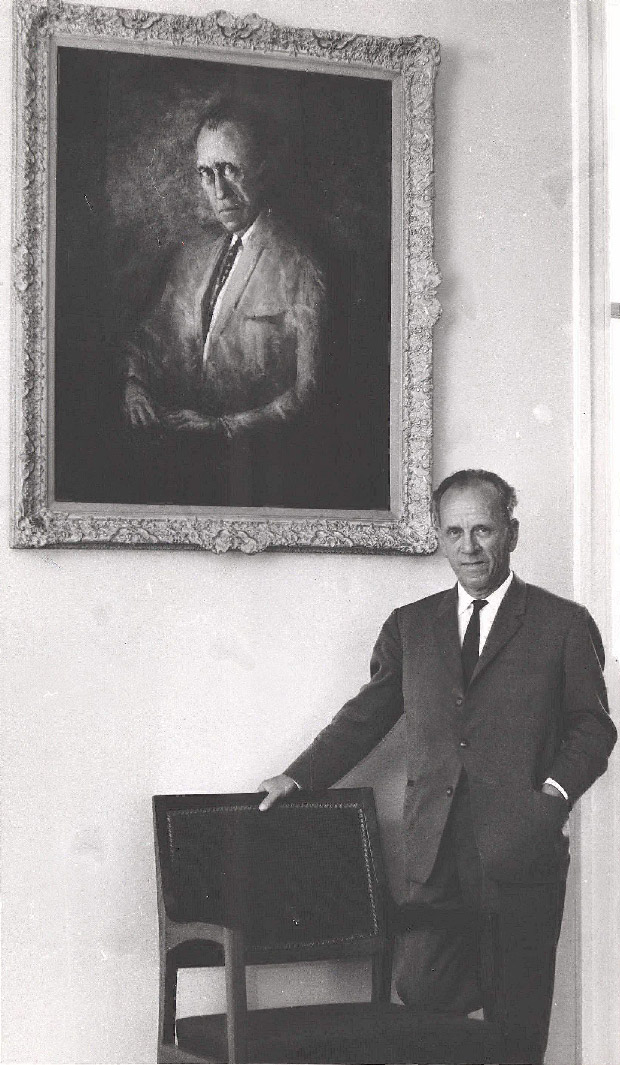
Assessments of Coombs
Though much is known about Coombs the public official and ‘enabler’ of good causes, there is not a great deal known about Coombs the private man. To his biographer, Tim Rowse, Coombs remained an enigma: ‘I can offer little insight into that inward Coombs that lay beyond his self-effacing ways of writing and talking.’ The distinguished ANU philosopher, John Passmore, remarked: ‘I just saw him as a series of admirable projects’ (Rowse 2002, p 9). Coombs may not have been associated with the development of an economic theory or major academic work, but he was clearly an outstanding economist, public administrator and adviser to governments. He was a superb communicator, able to articulate in lucid and cogent terms the essential elements of his policy advice. It was this ability that rendered him invaluable to government ministers and greatly endeared him to the Australian people. Above all was Coombs’ abiding love of Australia, its people, art and the natural environment.
Endnotes
Selwyn Cornish is the Reserve Bank of Australia’s Historian and an Honorary Associate Professor at the Australian National University. The author acknowledges the assistance of Jacqui Dwyer, Virginia MacDonald and Greg Tyler. [*]
For more information about Melville, see Cornish (2021). [1]
RBA Archives GGM-35-2, LG Melville to EOG Shann, 18 February 1935. [2]
RBA Archives C.3.20.2.32, HC Coombs to LG Melville, 8 June 1936 and 6 October 1936. [3]
RBA Archives GHC-48-2, LF Giblin to HC Coombs 23 November 1948; HC Coombs to LF Giblin, 3 December 1948. [4]
RBA Archives GHC-48-4, LG Melville to HC Coombs, 22 November 1948. [5]
RBA Archives ST-PR-35, HC Coombs to LG Melville, 13 January 1954. [6]
RBA Archives GHC-50-1 contains many of Coombs’ memoranda on current economic conditions over the years 1949–1951. [7]
RBA Archives GHC-53-2, Coombs to senior officers of the Bank, 18 June 1953. [8]
Coombs (1981, p 268). [9]
References
Coombs HC (1931), ‘The Development of the Commonwealth Bank as a Central Bank’, MA Thesis, University of Western Australia.
Coombs HC (1933), ‘Dominions Exchanges and Central Bank Problems Arising Therefrom’, PhD Thesis, University of London.
Coombs HC (1971), Other People’s Money, ANU Press, Canberra.
Coombs HC (1981), Trial Balance, Macmillan, Melbourne.
Cornish S (1982), ‘Full Employment in Australia. The Genesis of a White Paper’, Research Report No 1, Department of Economic History, Australian National University.
Cornish S (2007), ‘The Appointment of the ANU’s First Professor of Economics’, History of Economics Review, 48(Summer), pp 1–18.
Cornish S (2021), ‘The Central Bank’s First Economist’, RBA Bulletin, December.
Cornish S and K Schuler (2019), ‘Australia’s Full-Employment Proposals at Bretton Woods: A Road Only Partly Taken’, in Naomi Lamoreaux and Ian Shapiro (eds), The Bretton Woods Agreements, together with Scholarly Commentaries and Essential Historical Documents, Yale University Press, New Haven and London .
Fenner F and SF Harris (undated), ‘Herbert Cole Coombs 1906-1997’, Australian Academy of Science. Available at <https://www.science.org.au/Fellowship/Fellows/biographical-memoirs/herbert-cole-coombs-1906-1997>.
Rowse T (2002), Nugget Coombs. A Reforming Life, Cambridge University Press, Cambridge.